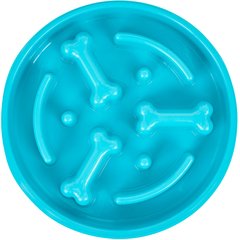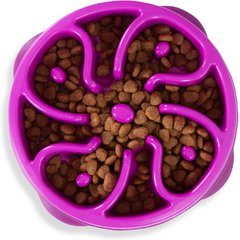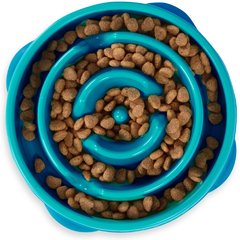Shepadoodle
Adobe Stock/Holly Michele
The Shepadoodle, or German Shepadoodle, is a cross of two popular dog breeds: the German Shepherd and the Standard Poodle. As a relatively new mix, Shepadoodles lack a breed standard, but the two parent breeds provide a helpful guide for knowing a Shepadoodle’s temperament, appearance, and needs.
German Shepherds are strong in body, mind, and spirit. These qualities served them well in their original role as sheep herders and continue to make them a top choice for working dogs and family companions.
The regal Poodle also hails from Germany and was originally bred to retrieve downed ducks from frigid waters. Famously elegant, the Poodle is more than just a pretty face (and coat), as they are also playful and smart dogs.
When these two breeds combine to create a Shepadoodle, there are some common attributes you can generally rely on: medium to large stature (40–90 pounds), chart-topping intelligence and trainability, seemingly endless energy levels, and deep family affection.
Caring for a Shepadoodle
Both German Shepherds and Poodles were bred for work, and this remains an important part of the Shepadoodle’s DNA. Their sharp brain and athletic body craves activity, and they need a family who can provide them with daily exercise, play, and companionship. Lifelong training is another must, which Shepadoodles both excel at and enjoy.
Loyal and affectionate Shepadoodles can form close bonds with people of all ages, as well as with other animals. But given their size and energy level, interactions with very young children and very small pets should be closely supervised to prevent accidental harm.
Shepadoodles are highly adaptable dogs and can do well in a wide variety of environments, including apartments. Just keep in mind that if their needs for exercise or companionship aren’t met, Shepadoodles may resort to showing off their barking talents, which won’t make you popular with the neighbors.
Grooming needs depend on which parent your Shepadoodle favors. German Shepherds have straight, harsh outer coats that shed a lot but need little daily attention. Poodles, on the other hand, have long, curly fur that sheds very little but needs regular attention to prevent matting.
Shepadoodle Health Issues
Both German Shepherds and Poodles are generally healthy breeds with life expectancies of 12–14 years and 10–18 years, respectively, and the Shepadoodle’s lifespan falls within this range.
But like all dogs, the two breeds are prone to certain health conditions that can be passed on to their Shepadoodle puppies.
Bloat
Bloat in dogs is when gas and/or food cause the stomach to expand. Sometimes, bloat progresses into a condition called gastric dilatation-volvulus (GDV). This is when the dog’s stomach twists and cuts off blood flow to and from the stomach and the spleen.
GDV is painful and a life-threatening emergency, and it’s more common in large and deep-chested breeds—including German Shepherds and Standard Poodles. It’s important for Shepadoodle pet parents to know the signs of bloat, including:
-
Retching or dry heaving without vomiting
-
Swollen abdomen
-
Sudden anxiety, pacing, or inability to get comfortable
-
Panting and drooling
-
Collapse
If you notice any of these symptoms in your Shepadoodle, seek veterinary care immediately.
Hip Dysplasia
Hip dysplasia is a condition in which the hip joint doesn’t develop properly, leading to a loose joint and osteoarthritis in dogs. The disease is more common in large dogs, including both of the Shepadoodle’s parents. Mild cases can be treated with anti-inflammatory medication and physical therapy, but severe cases may require surgery.
Common signs of hip dysplasia include:
-
Limping
-
Reluctance to get up or jump
-
Shifting of weight to front legs
-
Loss of muscle mass in the back legs
-
Hip pain
Elbow Dysplasia
Elbow dysplasia is similar to hip dysplasia and describes when an elbow joint develops improperly. It’s one of the most common causes of osteoarthritis in dog elbows, and German Shepherds are predisposed to the condition.
Like hip dysplasia, anti-inflammatory drugs can help with the pain and inflammation, but surgery is recommended before osteoarthritis develops.
Common signs of elbow dysplasia include:
-
Limping, especially after exercise
-
Reluctance or unwillingness to walk or exercise
-
Stiffness in the elbow joint
-
Grating or crackling sound from the elbow joint
Degenerative Myelopathy
Degenerative myelopathy (DM) is an inherited, progressive disease of the spinal cord—similar to Lou Gehrig’s disease (ALS) in people—that disproportionately affects German Shepherds. Dogs with this disease typically don’t show signs of illness until they’re 8 years old or older.
The signs of DM often start in one of the back limbs, then progress to include the others. These signs include:
-
Difficulty getting up
-
Weakness in back legs
-
Uncoordinated movements
-
Muscle loss
-
Scuffed toenails, or wounds to the top of the paws on back limbs from dragging the feet (secondary to loss of feeling)
While there are ways to manage the signs of DM with supportive care, there isn’t a cure.
Idiopathic Epilepsy
Epilepsy is a brain condition that causes recurring seizures. Idiopathic epilepsy (or epilepsy of an unknown cause) is a common condition in both Poodles and German Shepherds.
Epileptic seizures tend to last a minute or two, and signs can include loss of consciousness, uncontrollable spastic muscle movements, urination, and defecation. Lifelong medication is used to manage the condition.
Sebaceous Adenitis
Poodles are prone to an inflammatory skin disease called sebaceous adenitis. Symptoms include:
-
Hair loss
-
Odor along the hairline
-
Small clumps of matted hair
-
Dull, brittle, or coarse hair
-
White scales on the skin
-
Clusters of lesions (typically on the head)
Treatment depends on severity, but may include oral medications and topical products such as sulfur- and salicylic acid-based shampoos.
Von Willebrand Disease
Von Willebrand disease (vWD) is a genetic blood disorder that, while rare, is more common in Poodles. The condition causes a deficiency in the von Willebrand factor, a protein that helps platelets stick together to form a blood clot.
Affected dogs may have difficulty clotting, which can lead to bleeding from the nose, vulva, bladder, or gums. Dogs with this condition may also bleed for a long time during or after surgery. Most veterinarians recommend testing for VWD before planned surgery, such as spay and neuter procedures.
What To Feed a Shepadoodle
It’s important to partner with your veterinarian to choose the best food for your dog. Your vet will help you find a food that meets Association of American Feed Control Officials (AAFCO) standards and is nutritionally complete for your pet’s lifestyle, size, and health.
Dog food should also be formulated for your pet’s current life stage: Shepadoodle puppies need a high-quality puppy food, adult dogs must eat an adult-formula food, and older dogs can benefit from senior food as their nutritional needs change.
How To Feed a Shepadoodle
Most full-grown Shepadoodles should eat two meals a day: once in the morning and again in the evening. Breaking up meals can help reduce the risk of bloat, as can limiting exercise for half an hour after eating. Offering food to your dog in a slow-feeder bowl can further reduce the risk of bloat.
Recommended Products
How Much Should You Feed a Shepadoodle?
Feeding your dog the right amount requires two things:
-
Follow the portion guidance on your dog’s food bag
-
Work with your veterinarian to individualize this guidance to your specific dog
A Shepadoodle’s age, weight, body condition score, lifestyle, and health needs all play a factor in how much they need to eat every day.
Remember to include treats in your daily calorie count for a more accurate view of what your pet is eating. Dog treats should never make up more than 10% of your Shepadoodle’s daily calorie intake.
Nutritional Tips for Shepadoodles
Your Shepadoodle should receive all needed nutrients through their AAFCO-compliant dog food. However, your vet may recommend additional dog supplements to address certain health conditions, such as joint supplements for hip or elbow dysplasia. Never give your dog a supplement without your vet’s guidance.
Behavior and Training Tips for Shepadoodles
Shepadoodle Personality and Temperament
Shepadoodles have strong working dog instincts, sharp brains, and boundless energy. They need lots of exercise and close companionship to thrive, so they do best in active families. On average, German Shepherds and Standard Poodles need at least one and a half to two hours of exercise every day.
Shepadoodles may not be couch potatoes, but they aren’t against snuggling either. These are loving—and loveable—dogs that form deep bonds with their family. Still, interactions with very young children and very small pets should be supervised.
Shepadoodle Behavior
Both of the Shepadoodle’s parents are working dogs at heart, and they have the pipes to prove it. These play-loving pups may also resort to barking out of boredom and loneliness.
Daily exercise is a must, and will need to take place either within a securely fenced area or on a leash.
Shepadoodle Training
Begin socializing your Shepadoodle puppy to new animals, people, environments, activities, and objects as soon as you bring them home. This will help your puppy feel comfortable in new situations they’ll experience throughout their life. Your vet can give you tips for socialization.
At the same time, begin training your puppy with positive reinforcement. Shepadoodles are smart dogs and can pick up cues quickly, but consistency and patience are key to training any dog. Training is also a great way to give your dog mental stimulation and exercise.
Fun Activities for Shepadoodles
-
Tracking
-
Nose work
-
Skills training
Shepadoodle Grooming Guide
German Shepherds have a medium-length double coat. Their dense, harsh, straight outer coats shed a lot, and things get especially hairy when they lose their undercoats twice a year, in the spring and fall.
Poodles, however, have a long, curly coat that’s low on shedding but high on maintenance. Their low-shedding coat means Poodles are considered to be “hypoallergenic” dogs, though there’s really no such thing as an allergen-free pup.
Your Shepadoodle may take after their German Shepherd parent, Poodle parent, or both—and grooming needs can vary dramatically.
Skin Care
Regular grooming can help remove debris that can get caught in the Shepadoodle’s coat and irritate their skin, especially if your pup spends lots of time outside. It’s important to keep your dog on flea and tick preventatives as well.
Bathing frequency will partly depend on your dog’s lifestyle: For example, dogs that love to swim will need baths more often. Talk to your veterinarian about how often your dog needs a bath. Too many baths can strip the skin of healthy oils.
Coat Care
Poodles and German Shepherds have very different coats, so it’s difficult to predict exactly what type of fur your Shepadoodle will have. In general, it’s best to anticipate regular shedding and a frequent brushing routine.
Recommended Products
Eye Care
Call your veterinarian if you have concerns about your Shepadoodle’s eyes. Watch for signs like redness, discharge, cloudiness, or apparent changes in vision.
Ear Care
Standard Poodles grow hair in their ear canals, making them predisposed to ear infections. Their love of water can also be hard on ear health. Talk to your veterinary team about how and how often you should clean your dog’s ears, and which ear cleaning products to use.
Call your vet if you notice signs of an ear infection, such as redness, odor, pain, itchiness, and head shaking.
Recommended Products
Considerations for Pet Parents
Here are some questions to consider before adding a Shepadoodle to your family:
-
Do I have the time and energy to exercise a large, energetic dog every day?
-
Am I home enough to provide a dog with close companionship?
-
Do I have the skills and patience to provide extensive socialization and lifelong training using positive reinforcement?
-
Can I handle regular shedding and coat grooming?
-
Am I financially prepared to provide veterinary care?
-
Can I provide a dog with a loving home for their lifetime, which could be 18 years or more?
If you can answer these questions with an enthusiastic “Yes!” you may be ready to parent a Shepadoodle.
Shepadoodle FAQs
What is a Mini Shepadoodle?
Mini Shepadoodles are the offspring of German Shepherds and Miniature Poodles. Shepadoodles and Mini Shepadoodles share similar temperaments but can vary in some of their disease predispositions due to their size difference.
Are Shepadoodles good dogs?
Shepadoodles are smart, energetic, playful dogs. They need active families who have the time and energy to provide them with copious amounts of exercise and attention.
How much does a Shepadoodle cost?
The cost of a Shepadoodle varies by breeder, but you can generally expect to pay at least $1,000.
Do Shepadoodles bark a lot?
Yes. Shepadoodles are the offspring of two working dogs that use their barking skills on the job. These talents are less suited to family life, but positive, rewards-based training can help curb the behavior. Meeting their exercise and companionship requirements can also help keep the peace.





